Chlorine Shock for Hot Tub: Fix Cloudy Water Fast
Chlorine shock for a hot tub is a powerful treatment used to clean the water by breaking down bacteria, organic waste, and cloudy buildup. It’s typically added after heavy use or weekly as part of regular maintenance. Always run the jets with the cover off, and wait at least 20 minutes before using the tub again.
Why is it important? Chlorine shock is like a superhero for your hot tub, fighting off all the gross stuff that can make your soak less enjoyable. It’s especially crucial after heavy use, when you’ve changed the water, or if things start looking cloudy or off-color.
When should you shock your hot tub? Aim for once a week, but if your tub gets a lot of love or you’ve had a big bash, consider doing it more often. Here are critical times to hit that shock button:
- After a downpour
- Post-water change
- Following a wild party or big get-together
- When your water starts looking funky
- If you’re worried about water quality
Remember, a little shock now can save you from a big headache later!
Hot Tub Shock Treatment Calculator
A quick guide to using the Shock Treatment Calculator:
- Enter Hot Tub Volume: Put the gallons of water your hot tub holds in the “Hot Tub Volume” box.
- Pick Water Clarity: Based on your water’s state, choose from Clear, Slightly Cloudy, or Very Cloudy.
- Click Calculate: Hit the “Calculate” button.
- See Result: Check the ounces of shock treatment you need in the “result” section.
Chlorine Shock Calculator
Feel free to use the hot tub volume calculator here to calculate your hot tub’s water in gallons.
Important Notes:
- Adjust the Calculation: The example calculation uses a simplified assumption. It would help if you replaced it with the correct calculation based on the chlorine shock product you are using. Typically, the product label will tell you how much the chlorine level will increase per a certain amount of product per gallon of water.
- Safety First: Always handle chemicals with care. Follow the product’s safety instructions and wear protective gear as recommended.
- Validate with a Professional: If unsure, consult a pool or hot tub maintenance professional to confirm the correct amounts and procedures for adding chlorine shock to your hot tub.
You can try SpaGuard Enhanced Shock on Amazon

or Clorox Spa Shock XtraBlue. on Amazon

Both are highly rated and easy to use for weekly hot tub maintenance. (As an Amazon Associate, I earn from qualifying purchases)
How to shock a hot tub
- Test and adjust the pH and alkalinity of your hot water to the recommended levels.
- Turn on the jets to circulate the water.
- Add the chlorine shock to the water according to the package directions.
- Let the jets run for at least 20 minutes to distribute the shock throughout the water.
- Turn off the jets and let the water stand for at least 6 hours before using the hot tub.
Safety Tips
- Always wear gloves and an eye shield when handling chlorine shock.
- Do not mix chlorine shock with other chemicals.
- Wait to use the hot tub until the chlorine level has returned safely. You can test the chlorine level with a test kit.
Chlorine shock is a powerful chemical, so it is essential to follow safety precautions. Always use gloves and eye protection when managing chlorine shock.
Do not add chlorine shock to the hot tub water if any bathers are in it. Be sure to wait at least 24 hours after shocking your hot tub before using it again.
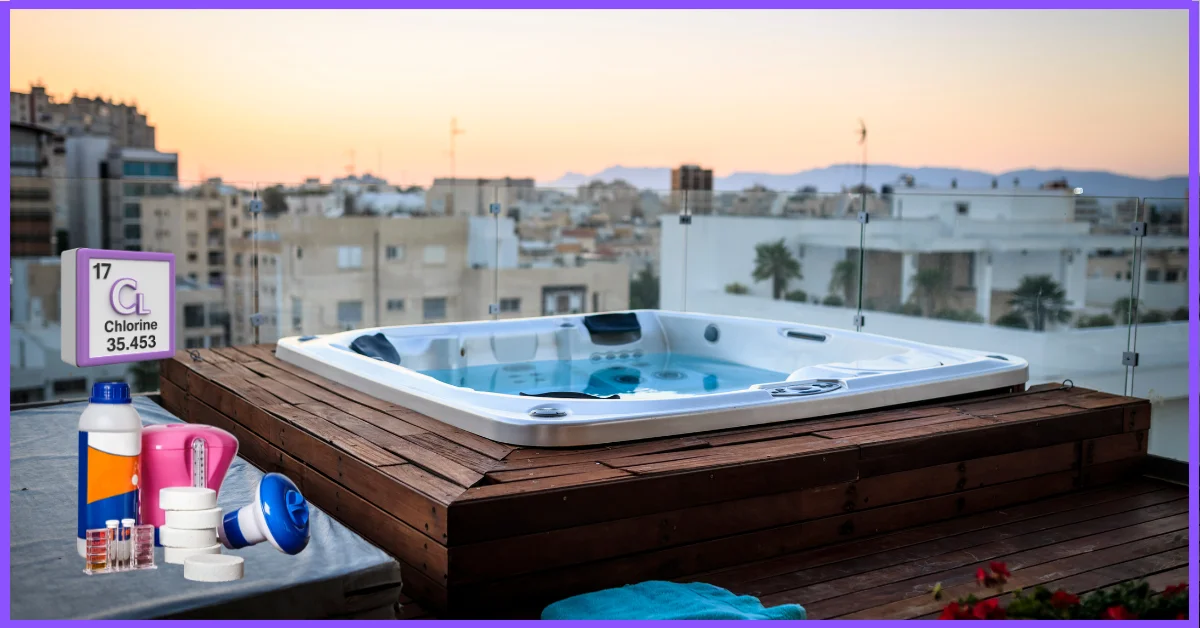
Ready to keep your hot tub sparkling clean without the harsh effects of chlorine? Try the Aquadoc Non-Chlorine Spa Shock. This chlorine-free shock treatment is perfect for maintaining a fresh and clear hot tub, whether using bromine or chlorine as your primary sanitizer.
Its powerful oxidizing properties ensure your water stays crystal clear and safe for everyone. Order your 5lb pack of Aquadoc Non-Chlorine Spa Shock today and experience the ultimate hot tub care! Buy Now
As an Amazon Associate, we earn from qualifying purchases. This post may contain affiliate links, which means we may receive a small commission at no additional cost to you.
How often should you shock your hot tub?
Always check your sanitizer and pH levels before and after shocking to make sure everything stays balanced. And don’t forget to leave the cover off for 20 to 30 minutes after you shock, so the gases can escape.
In most cases, you should shock your hot tub once a week to keep the water clean, clear, and safe to soak in. But it depends on how much you’re using it and what kind of sanitizer you use (chlorine, bromine, or a salt system).
Here’s a more detailed breakdown:
✅ Weekly Maintenance
A weekly shock helps remove:
- Body oils, sweat, and lotions
- Leftover sanitizer (like used-up chlorine or bromine)
- Bacteria or algae that might sneak in
Even if the water looks fine, organic buildup can still be there, and shock helps clear that out.
🛁 After Heavy Use
You should also shock your hot tub:
- After a party or gathering
- If multiple people used it in one day
- After a few days of vacation or no use
All those extra bodies mean more gunk in the water, and shock helps keep things under control.
🧪 When the Water Looks or Smells Off
If the water starts to get:
- Cloudy
- Foamy
- Has a strong chemical or musty smell
That’s your sign to shock it, even if it hasn’t been a full week.
🚿 What If You Use It Daily?
If you’re in your hot tub nearly every day, you might want to shock it twice a week to stay ahead of water issues.
What are the types of shock treatments?
There are two main types of shock treatments for your hot tub: chlorine shock and non-chlorine shock. Both have advantages and disadvantages, and you should select the one that fits your needs and preferences.
1. Chlorine shock
- Chlorine shock is a granular product containing chlorine and cyanuric acid (stabilizer) in the same compound.
- It is also known as dichlor or sodium dichloro-s-triazinetrione.
- It has the following advantages:
- It is easy to use and dissolves quickly in water.
- It has a neutral pH and does not affect the water balance.
- It effectively restores chlorine or bromine sanitizer levels and kills bacteria and other contaminants.
- It has the following disadvantages:
- It can raise the cyanuric acid level in your hot tub over time, reducing chlorine’s effectiveness.
- It can bleach or damage some materials in your hot tub, such as vinyl covers or plastic jets.
- It can create harmful chloramine by-products when it reacts with organic matter. Chloramines are responsible for the strong chlorine smell and eye irritation some people experience in hot tubs.
2. Non-chlorine shock
- Non-chlorine shock is a granular product that contains potassium monopersulfate as the active ingredient.
- It is also known as MPS or potassium peroxymonosulfate.
- It is an oxidizer that does not have any sanitizer or stabilizer.
- It works by breaking down organic matter and releasing oxygen into the water.
- It does not affect your hot tub’s pH or sanitizer level.
It has the following advantages over chlorine shock:
- It does not raise the cyanuric acid level in your hot tub, so you can use less chlorine to sanitize your water.
- It does not bleach or damage any materials in your hot tub.
- It does not produce any chloramines or unpleasant odors in the water.
- It allows you to use your hot tub sooner after shocking it since you do not have to wait for the level to drop.
It has the following limitations:
- It does not kill bacteria or other pathogens in the water by itself. It would help if you used sanitizers like chlorine or bromine to disinfect your hot tub.
- It only works well in cold water or challenging water conditions.
- It can be more expensive than chlorine shock.
Which one should you use?
Chlorine shock helps sanitize hot tubs by killing algae and microorganisms. Use weekly according to label instructions. After adding, run jets for 30 minutes to circulate. Test the water to ensure safe chlorine levels.
Wear gloves and eye protection when handling. Don’t mix with other chemicals. Keep out of reach of children and pets. Store in a cool, dry place.
Top chlorine shocks:
- SpaGuard Shock (non-chlorine)
- Pool Mate Spa Shock (chlorine, pH neutral)
- Clorox Spa Blue (restores blue color)
- Leslie’s Hot Tub Shock (affordable, no harsh smell)
Consult a dealer if you have concerns about proper chlorine shock use and safety.
For additional information, visit Hot Tub Patio, or if you’re interested in more reading, see Hot Tub Water Care.
FAQs
We hope this guide has helped you understand why, when, and how to shock your hot tub with chlorine. If you have any questions or feedback, please comment below. Thank you for reading, and happy soaking! 😊
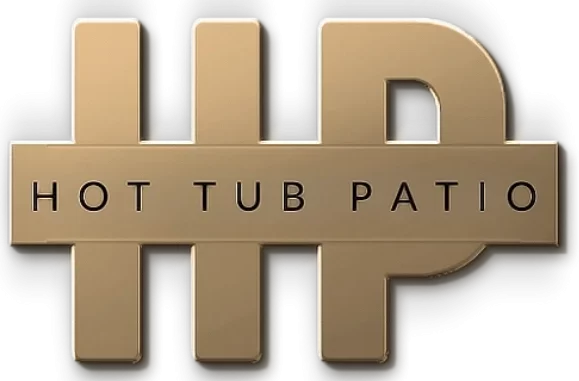
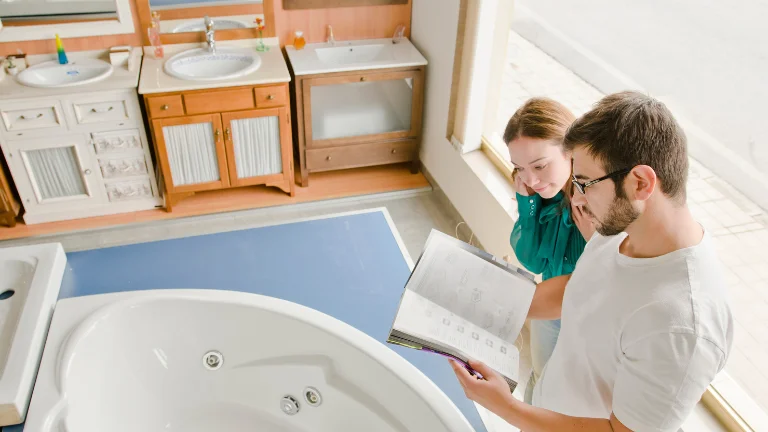






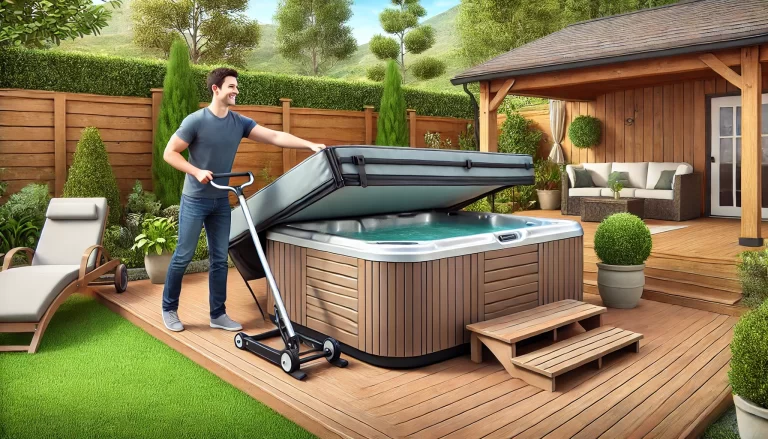

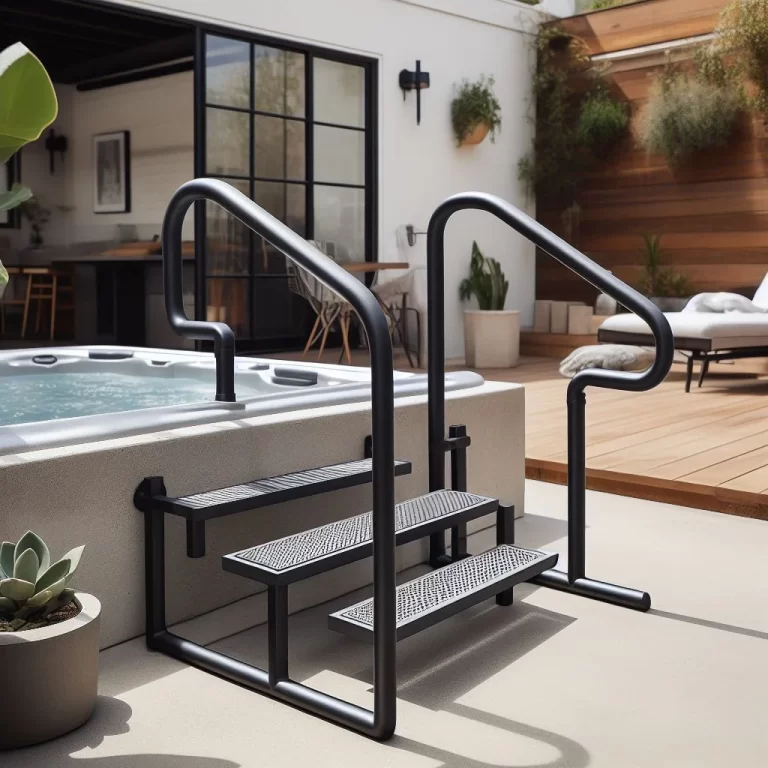
4 Comments